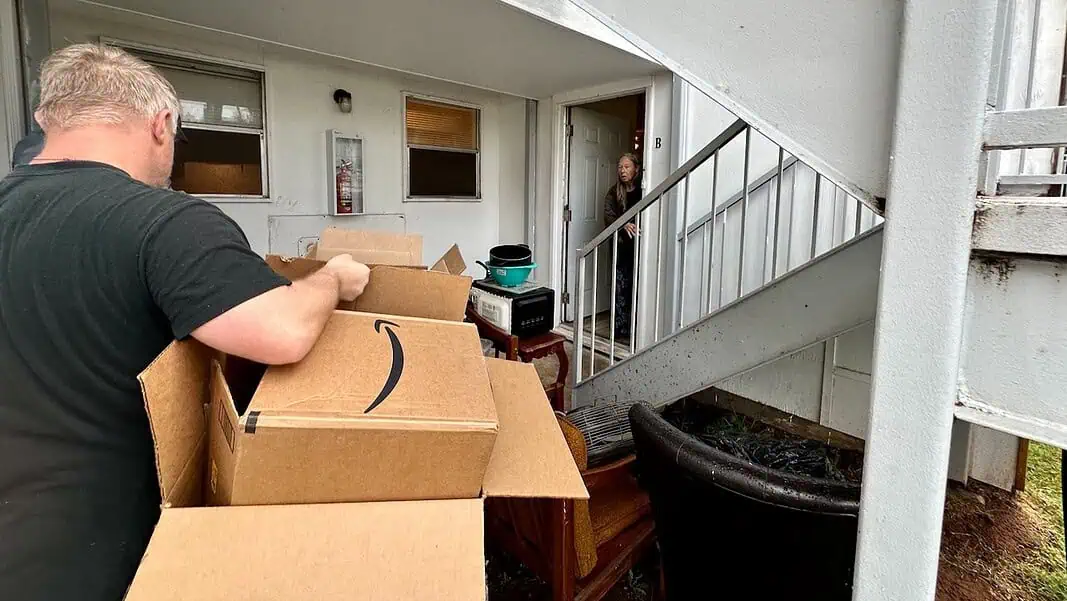OKLAHOMA CITY — Amidst a national housing crisis, a quarter of Oklahoma renters met the qualifications to be considered extremely low-income, according to the National Low-Income Housing Coalition.
Those renters earned at or below 30% of the area’s median income, or about $30,000 for a 4-person household. Affordable housing in Oklahoma is scarce, which contributes to the state’s high eviction rates.
The coalition found just 38 affordable homes available per 100 extremely low income renters in Oklahoma, fewer than last year’s 42. That’s slightly better than the national average of 35 affordable and available housing units per 100 renters.
Oklahoma has an estimated shortage of 84,718 affordable and available rental homes for extremely low income renters.
In addition, there’s a shortage of landlords willing to lease to people on rental assistance.
Eviction rates and homelessness are rising in Oklahoma, and the root cause is the lack of affordable housing, said Sabine Brown, senior policy analyst on housing for Oklahoma Policy Institute.
“We’re seeing rents and housing costs rising faster than wages and that is pushing more people towards eviction and homelessness,” Brown said.
Vulnerable groups most affected
The majority of extremely low income renters in Oklahoma are working, disabled or elderly, with those three categories making up 83% of extremely low income renters.
Two people working full-time on Oklahoma’s minimum wage can’t afford a typical two-bedroom rental home at fair market value without spending more than the recommended 30% of income on housing, according to Oklahoma City’s 2025 Point in Time report.
More than a third of extremely low income renters are working.
“Our minimum wage here in Oklahoma is not a livable wage,” said Carrie Blumert, chief executive officer of the Mental Health Association Oklahoma and former Oklahoma County commissioner.
State Question 832, which goes before voters in June, would raise the state’s minimum hourly wage in stages from $7.25 to $15 by 2029.
A quarter are seniors and nearly a quarter are disabled, the National Low-Income Housing Coalition found.
“For senior adults, a lot of folks really rely on their social security check,” Blumert said. “Folks who get a $900 social security check once a month, that doesn’t cover a $1,200 rent payment for a one-bedroom apartment. We really set people up to fail.”
Cities’ solutions
Both Tulsa and Oklahoma City ranked among the 20 cities with the highest eviction rates, according to a 2016 Eviction Lab report. High eviction rates, combined with an increasing number of homeless people, led both cities to address the lack of affordable housing.
Oklahoma City’s Housing Affordability Implementation Plan focuses on five areas, said Shannon Entz, who leads the advisory group tasked with carrying out the plan.
The areas include:
- Increasing the inventory of affordable housing
- Preserving the long-term affordability and habitability of the homes
- Increasing transitional housing for those leaving shelters and incarceration
- Supporting opportunities to maintain and sustain home-ownership
- Increasing partnerships for affordable housing
“We want people to be able to age in place,” Entz said.
Another Oklahoma City initiative is the Key to Home Partnership, which seeks to provide services to people living in encampments, ultimately leading to housing.
Of the 400 people who have been housed through the Key to Home Partnership, 95% have maintained their housing through the project.
Several studies have shown that across the nation, between 75% and 91% of people housed through similar programs have remained housed, according to the National Alliance to End Homelessness.
In Tulsa, Mayor Monroe Nichols issued an executive order in February to address affordable housing needs in the city by streamlining permitting and zoning and offering incentives to developers to transform vacant properties into affordable housing projects.
While these programs have attempted to mitigate evictions and homelessness, eviction filings increased 9% in the eight years since the Eviction Lab’s report.
“The state needs to step in,” Blumert said. “Every level of government plays a part in this.”
Statewide solutions
Legislators have presented some solutions to address evictions and affordable housing in the state.
Rep. Mickey Dollens, D-Oklahoma City, introduced House Bill 1051 during the last legislative session that proposed incentivizing municipalities with populations of 20,000 or more to amend their zoning ordinances to allow for multi-family and affordable housing zones in order to lower the cost of housing for cities. The bill ultimately died in committee.
Other bills that did not make it out of this legislative session include Senate Bill 275, proposed by Sen. Julia Kirt, D-Oklahoma City, and HB 2189, proposed by Rep. Melodye Blancett, D-Tulsa, which both proposed a Workforce Housing Commission made up of developers, nonprofits and local government leaders to identify housing issues and recommend solutions.
“Unfortunately, those measures haven’t moved forward, so there is definitely more work that needs to be done, particularly now that we are looking at federal cuts to housing programs, most notably rental subsidies, that are going to make the housing crisis even worse,” Brown, of Oklahoma Policy Institute, said. “It is really important now, more than ever, for state legislators to be looking at solutions to the housing crisis.”

Republished in partnership with Oklahoma Watch under a Creative Commons license. Free Press publishes this report as a collaborative effort to provide the best coverage of state issues that affect our readers.
Jake Ramsey covers evictions, housing and homelessness. Contact him at (405) 370-3798 or jramsey@oklahomawatch.org.











